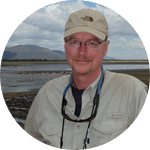About This Project
Recent advances in UAV technology have allowed thermal infrared cameras to be mounted on multi-rotor drones. This approach has successfully provided very high resolution, georeferenced thermal orthophotos and 3D models. However, multi-rotors are limited to ~20 minutes per flight, which restricts surface area coverage. Our objective is to use fixed-wing UAV (>100 min per flight) to map much larger areas than previously attempted.
Ask the Scientists
Join The DiscussionWhat is the context of this research?
This research was inspired by my PhD research project, which demonstrated the use of drones equipped with thermal infrared cameras to map geothermal areas:
http://www.infraredcamerasinc....
http://theargeo.org/fullpapers...
http://theargeo.org/presentati...
What is the significance of this project?
This project has the potential to show that fixed wing drones are able to collect thermal imagery efficiently over a wide area. Further, that this imagery is of a sufficient quality to be processed by photogrammetry into georeferenced, temperature-calibrated thermal orthophotos, and 3D models. This would allow the approach to become a key tool in geothermal science, including geological, geochemical and geophysical surveys, environmental baseline and monitoring studies, geotechnical studies and civil works.
What are the goals of the project?
This project aims to show that fixed wing drones are able to collect thermal imagery efficiently over a wide area, and that this imagery can be processed by photogrammetry into georeferenced, temperature-calibrated thermal orthophotos, and 3D models.
Budget
I am currently involved with four research proposals that require thermal imaging of very large areas (~100km2). These projects involve mapping large volcanic areas for the purposes of geothermal energy exploration (renewable energy). The thermal imagery will be critical to locate areas of surface thermal activity in remote terrain with difficult access. These projects are externally funded by a mixture of private energy exploration companies and international funding agencies.
Fixed wing UAV ($4000)
Custom camera mounting to UAV ($1000)
Endorsed by
Meet the Team
Mark Harvey
Mark Harvey is currently in the final stages of his PhD. His research is concerned with mapping and quantifying heat flow from high-temperature hydrothermal systems and volcanos, and how this can be used to locate geothermal energy, a clean and renewable source of electricity. A high temperature magmatic hydrothermal system consists of a convecting plume of fluid, recharged at the margins by cool meteoric water. The cool water exchanges heat with a magmatic body at depth, then rises toward the surface as a high temperature plume of low density water and vapour. These systems can be tapped using deep wells to provide high temperature steam and clean, base-load electricity for the grid.
In mid-2015, he was commissioned by local government to undertake an experimental aerial thermal infrared survey of a geothermal area in New Zealand for environmental monitoring purposes. The research included the development of innovative geothermal heat flow mapping methods using a drone equipped with high-resolution thermal camera. This work was recently published in the Journal of Volcanology and Geothermal Research, and is probably the first ever square-km-scale, temperature calibrated and georeferenced image of a geothermal area ever produced by a drone equipped with a thermal camera.
Lab Notes
Nothing posted yet.
Project Backers
- 1Backers
- 2%Funded
- $100Total Donations
- $100.00Average Donation

